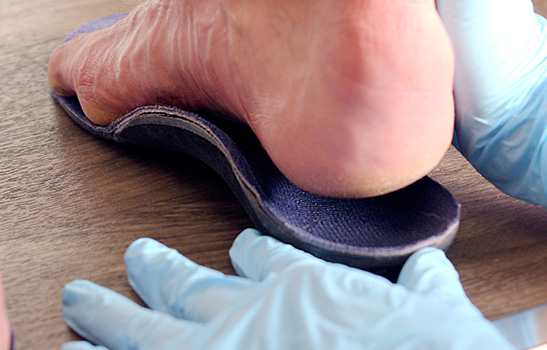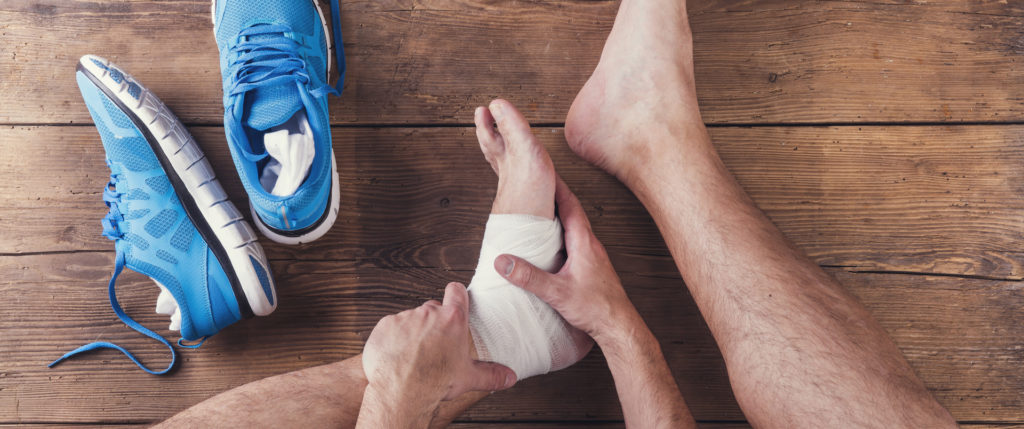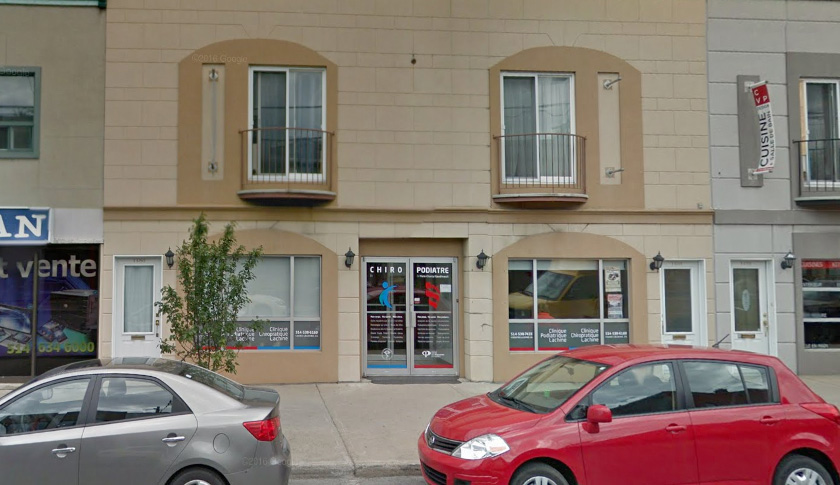Osteoarthritis / Osteoarthrosis
Osteoarthritis is the most common form of arthritis, affecting one in ten Canadians. This condition results from the breakdown of joint cartilage and bone, leading to stiffness, pain and decreased joint mobility. While it is often caused by normal joint wear and tear associated with old age, osteoarthritis can also arise following injury or abnormal stress to a joint.
See the causes See the long term complications See how to relieve yourself at home
Signs and symptoms of Osteoarthritis
- Pain/stiffness after resting
- Pain/stiffness when getting up in the morning
- Pain in the morning that passes after taking your first steps
- Difficulty walking normally after prolonged rest
- Throbbing pain may also be felt during rest
- Cracking/grinding in the joint area
- Loss of flexibility/mobility in the joint
- Shifting or deviating joints
- Formation of bumps around the affected joint
- Pain may be very localized or may irradiate
- In rare cases, swelling or redness may occur after physical activity
What are the causes of Osteoarthritis?
A joint is a connection between two bones each surrounded by a layer of cartilage that acts as a shock absorber. This cartilage, along with lubricating synovial fluid, protects the bones from friction and impact. This mechanism is what allows joints to move smoothly and painlessly.
Osteoarthritis refers to the premature or excessive wear and tear of a joint. The greater this breakdown, the more the joint cartilage gets worn and the less effective it gets at providing the bones with adequate protection. And as the amount of lubrication around the joint diminishes, the joint experiences less movement, less synovial fluid is produced and cartilage wear intensifies: a vicious circle that leads to grinding, stiffness and pain at the affected joints.
Osteoarthritis in the joints of the feet is not uncommon. The condition may be caused by a previous injury, but the most frequent cause is wear resulting from repeated stress. A number of foot-related posture problems can lead to joint deterioration. When the bones are not properly aligned, cartilage is exposed to wear and tear, leading to long-term degeneration.
The most commonly affected joints in the foot are the big toe, the midtarsal joints (located on the top-middle part of the foot) and the ankles.
Below is a list of foot-related biomechanical problems that can lead to excessive wear and tear of the joints in the feet :
- Flat feet or fallen arches
- High arches
- Bunions (HAV)
- Leg-length discrepancy
- Problems with metatarsal length (short/long first metatarsal or excessively long second metatarsal)
- Lack of flexibility in the calf muscles
- Forefoot valgus/varus
- Joint hypermobility
There are also aggravating factors that can make the problem worse :
- Unsuitable footwear
- Activities involving excessive and repetitive stress
- Being overweight
- Poor posture (e.g. “knock knees”)
Progression and consequences Osteoarthrosis
Because joint cartilage doesn’t have nerve endings, osteoarthritis initially causes very little discomfort. Stiffness after resting may be the only symptom felt. But as the breakdown advances, joints may begin experiencing cracking and grinding. Only when the damage reaches the underlying (subchondral) bone does pain start to emerge. Over time, bony projections called osteophytes begin to form where the cartilage is broken down and the bone tissue is stressed. This accounts for the appearance of bumps around the joint. These bumps restrict the joint’s normal movement and often cause discomfort and pain due to friction with footwear. In the final stage, the space between the joints disappears completely and total loss of mobility sets in.
While the progression of osteoarthritis is very slow, it is irreversible. That’s because joint (hyaline) cartilage is unable to regenerate itself. The scar tissue that forms when attempting to repair the damage, called fibrocartilage, is less resilient and offers poor resistance to pressure from everyday activities.
Furthermore, the ligaments and muscles surrounding the joints can become sore as they attempt to provide protection. In turn, this can lead to cramps, muscle spasms and even tendinitis.
Finally, having limited joint function in the foot can lead to unconscious changes in gait, which can have a domino effect on the entire body, causing pain elsewhere in the foot, at the ankles or knees, hips and back.
How to relieve Osteoarthritis at home
1. Rest and relief :
- Wear laced shoes with thick, cushioning insoles and a slight heel, such as running shoes.
- Avoid standing barefoot for long periods at home.
- Equip shoes with pharmacy-bought cushioning insoles with arch support.
- Reduce high-impact activities or activities performed on uneven surfaces.
- If pain is present, choose sports that are less taxing on the feet such as cycling or swimming.
- It’s important to remain active as this will stimulate the healing of cartilage and strengthen stabilizer muscles.
2. Self-massage :
- Perform a massage by rolling a golf or tennis ball under your foot, being careful not to apply direct pressure to the painful area. This helps relax the muscles in the foot that attempt to protect the affected joint.
- Gently pull on the affected joint, then gently move around the joint to reduce tension in the surrounding structures.
Diagnostic of Osteoarthritis
- X-rays must be conducted to confirm the diagnosis. X-rays allow us to observe the quality of the joint space, the severity of the condition and the presence of calcification or bony projections. They also make it possible to eliminate other diagnoses.
- To evaluate foot function and identify whether poor foot alignment or posture may be at fault, a thorough biomechanical exam is essential. The exam is accompanied by a computerized gait analysis performed using pressure sensors. This technology lets us evaluate the distribution of plantar pressure and identify areas of the foot that are overloaded.
What can my podiatrist do about Osteoarthritis?
Once the problem and its potential causes have been identified, your podiatrist will be able to recommend a personalized treatment plan for your condition.
Some solutions include:
1. Plantar orthotics :
Plantar orthotics are an essential tool when dealing with poor foot mechanics. These devices are designed to reduce the impact of foot-related mechanical problems on the joints in the feet. They also ensure that uniform pressure is applied on them. Orthotics protect the painful joint, slow down joint degeneration and protect surrounding structures.
2. Ultrasound-guided cortisone injections :
In some cases, osteoarthritis may be treated with cortisone injections. Instead of administering an anti-inflammatory drug in pill form, cortisone (an anti-inflammatory medication) is injected directly into problem area. Ultrasound helps guide the injection process in real time, making it more precise and effective.
3. Viscosupplementation :
Viscosupplementation is the procedure during which a viscous, gel-like solution is injected directly into a joint affected by light to moderate osteoarthritis, restoring the joint’s mobility. The injected lubricating fluid helps cushion the joint and relieve pain.
4. Medication prescription :
Painkillers, muscle relaxants and/or anti-inflammatory drugs may be prescribed.
5. Manipulative therapy :
A podiatrist may perform manipulative therapy to mobilize sensitive joints and release the associated muscles and structures in order to reduce symptoms and promote healing.
6. Physical therapy :
- Cryotherapy and ultrasound
- Taping
- Splints, rocker bottom shoes and walker boots
How to prevent Osteoarthritis?
- Use appropriate footwear with adequate insoles, a slight heel and shoelaces that allow for proper adjustment to the feet.
- Replace your shoes and work boots annually.
- Wear your prescribed orthotics daily.
- If overweight, consider losing weight.
- Keep your feet strong and flexible.
- While working, vary your posture and take breaks during repetitive tasks.
I'm too young to have osteoarthritis!

The incidence of osteoarthritis increases with ageing, but it can occur at any stage of life. While the condition worsens more slowly in younger patients, it can lead to disability earlier in life. Therefore, early signs of joint damage should be taken seriously. It's also important to remember that joint damage caused by injury can lead to premature osteoarthritis at any age.
What if it’s not Osteoarthritis?
- Inflammatory arthritis (gout, rheumatoid arthritis, psoriatic arthritis, etc.)
- Cyst
- Bursitis
- Stress fracture
- Sesamoiditis
- Tumour mass
- Complex regional pain syndrome
- Radiculopathy (sciatic nerve or lumbar compression)
- Tarsal tunnel syndrome


